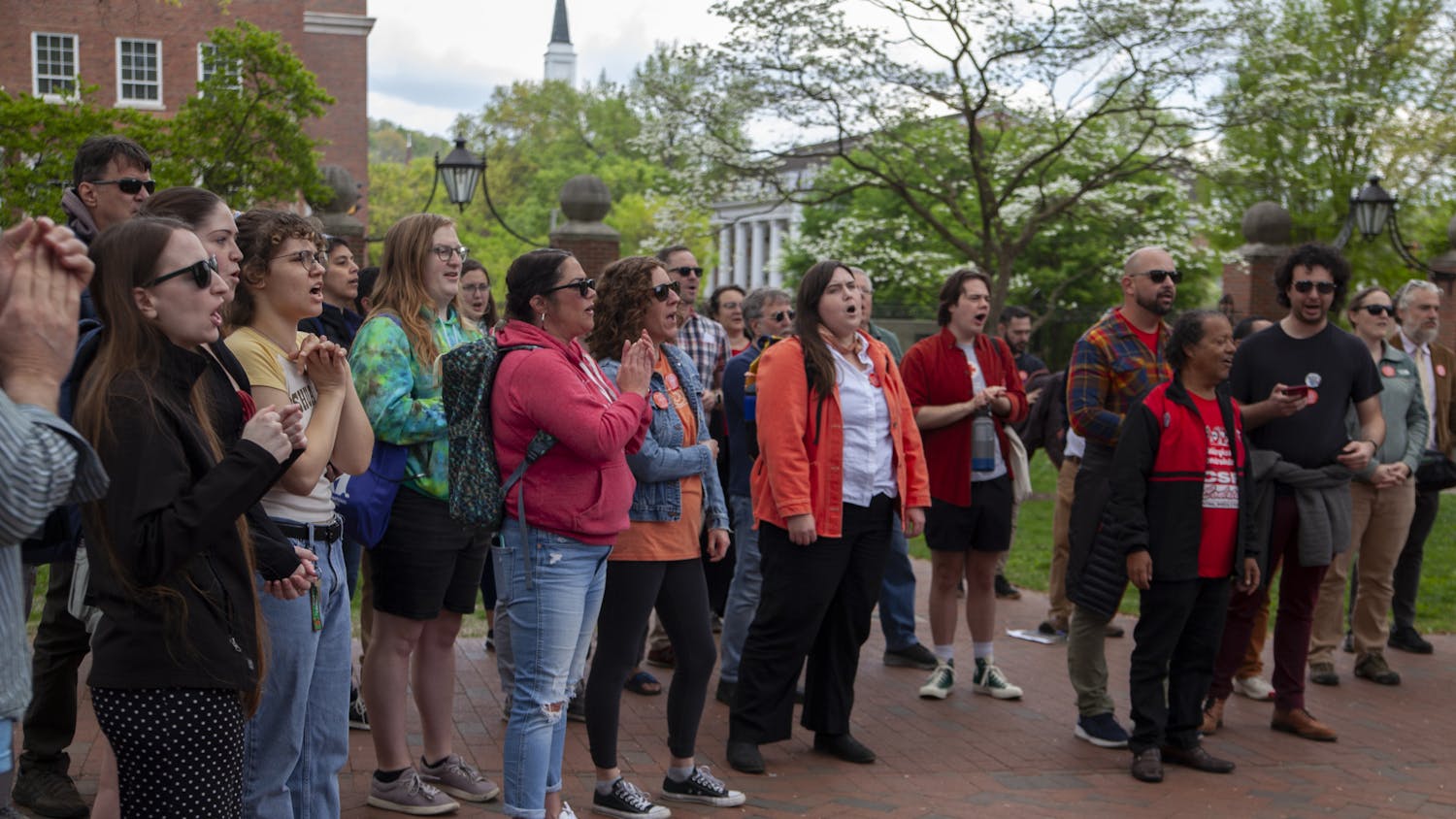Diversity in police departments in Athens still fall below average, does not reflect community they serve.
Ohio University Police Department has not had a black officer in three years, according to Lt. Tim Ryan.
Police officers, ideally, mirror the community in which they serve.
But finding a diverse applicant pool in Southeast Ohio, where the number of minorities is low, can be difficult, OU Police Chief Andrew Powers previously told The Post.
Of OUPD’s 30 police officers, 27 identified him or herself as white, according to OU’s Office of Institutional Research at the end of October 2014.
One OUPD officer identified as Latino, another as Native American and one officer didn’t report his or her ethnicity.
Those statistics, however, are in line with the small percentage of African American, Hispanic and Asian residents in Athens, which had fewer than 4 percent for each group, according to 2013 U.S. Census Bureau data.
However, OU’s student population is slightly more diverse than the Athens area.
In 2013, Caucasian students made up about 79 percent of Ohio University’s total enrollment, while black students accounted for about 4.6 percent. Hispanic students made up about 2.6 percent of enrollment.
Jay McDonald, president of the Fraternal Order of Police of Ohio, said many progressive departments both state and nationwide have engaged in minority recruitment, but were unsuccessful.
“It is extremely difficult to attract minorities and female candidates to try to make a career out of public service,” McDonald said.
Minority officers made up 31.5 percent of campus police departments in the 2011-12 academic year, according to data from the U.S. Bureau of Justice Statistics.
African American officers accounted for 21 percent of the total sworn officers. The percentage of Hispanics in campus police department was 7.5 percent.
The last black OUPD officer employed was Mark Mathews, who was fired as captain after an investigation stemming from an incident with the Athens Police Department. Matthews was off duty and driving his personal vehicle at 48 mph in a 25 mph zone on East State Street, according to a previous Post report.
A further test indicated a 77-percent likelihood that Mathews’ blood alcohol content was in excess of .10 percent.
{{tncms-asset app="editorial" id="0ac4d420-a5b0-11e4-85f8-dbed80a718c2"}}
Athens Police Department
“We’ve not had a black or African American officer in our department since I’ve been here,” said Athens Police Chief Tom Pyle, who has been with the department for more than 20 years. “We have had other minorities; we’ve had Hispanic and an officer of Hawaiian descent.”
Pyle said his department has shared the same challenge in recruiting officers of diverse backgrounds, adding that Athens County remains a less attractive option for minorities compared to metropolitan areas such as Columbus or Cleveland.
McDonald said the number of people interested in law enforcement has dropped significantly across the state.
He added that a diverse police department would be ideal — especially if the applicants were available — though it’s not always necessary to produce quality service.
“You don’t need to be the same race or gender of a victim to provide quality service,” McDonald said. “If I get sent to a house, I never stop and think about the race or gender of the people in that house. I’ve never once not tried to deliver the same service to the community based on the race or gender of the people (I’m) called upon to serve.”
Hocking College Police Chief Al Matthews, who is black, said diversity in police departments could provide some sort of familiarity and ease to people who share the same ethnicity with the officer.
“I think it would strengthen any college institution to have a diverse police department just because we’re the ambassadors; we’re the people you’re going to see the most,” Matthews said.
Bowling Green State University Police Chief Monica Moll said a police department has the most success when it diversifies its ranks.
“The best way to learn about people that are different than you is to work with them every day,” Moll said.
In an effort to find a more diverse pool of applicants, OUPD has advertised its employment opportunities online and on various social media, job search websites and newspapers, Ryan said.
“As we continue our recruitment process every year we will continue to strive for the most diverse applicant pool that we can in terms of our future hires,” Powers said.
@JoshuaLim93
jl951613@ohio.edu






